Eurail Passes are famous as a way to save money while exploring Europe, but they are also confusing and often misunderstood. They are still an amazing money-saving tool for certain types of travelers, and not a wise idea for most others. Before Europe introduced dynamic rail pricing (like airfares, where the price varies depending on when you buy it), a Eurail Pass was an easy way to save money since all tickets had fixed prices that were generally fairly expensive. These days most travelers can save far more money just by buying their train tickets at least a few weeks in advance.
That said, Eurail Passes are still great for longer trips and especially for people who like to make plans as they go. Dynamic rail pricing made advanced tickets much cheaper, but it also made last-minute tickets MUCH more expensive. Below we will discuss Eurail Passes and whether they are a good idea for your trip or not.
Disclosure: This is a reader-supported website and some of the links are affiliate links where a small commission is paid to help keep this site going.
Note: This article was written in 2012 and has been continuously updated since then, so all information is current as of April, 2024.
Eurail 2024 changes: New countries and a mobile version

Aside from that it’s just the normal fact that they have updated the timetables as of December 2023 and have a few promotions going on, but those usually don’t happen over the busy summer season.
Eurail passes are now available in a mobile version
Until very recently, Eurail Passes were only available in paper form and they were quite confusing at first. You’d get a pass with a series of empty boxes on it and you’d need to enter your trip before you’d use your pass each day and then have the first conductor verify it. If you lost your ticket (and this was not uncommon), it was a whole ordeal to attempt to get a replacement.
Again in 2024 Eurail offers a fully mobile version that is delivered instantly to your mobile device with no delivery fee. And if you somehow lose your phone, you can resume using your Pass on your replacement with no extra headache. This is MUCH more convenient in every way and as long as you can keep track of your phone you’ll always have your train pass handy.
If your trip will be 2 weeks or less, a Eurail Pass probably won't be worth it
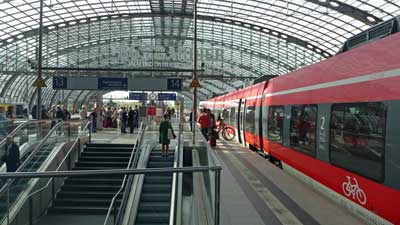
Eurail Passes are ideal for travelers on longer trips, and especially those who don’t want to plan all of their destinations and dates far in advance. If you have your itinerary pretty much planned out and you don’t require much flexibility, you’ll be far better off just locking in your dates and buying your train tickets as early as you can. Again, they can be surprisingly cheap if you buy 2 to 4 months out.
If you are age 27 or younger, a Eurail Pass is probably worth it

With this in mind, if you are lucky enough to still be 27 or younger, you should seriously think about getting a Eurail Global Pass Youth, partly because the sense of freedom instantly gets more expensive at age 28. The age cutoff was 25 until recently, so this change is a great deal for anyone who will be 26 or 27 at the start of their trip.
You aren’t guaranteed to save money by buying a Youth Eurail Pass, but chances are good that you WILL save money and you’ll definitely save a lot of hassle as well. Especially now that Eurail Passes come in a mobile form, it’s even that much more convenient to just hop aboard any train that is about to leave the station and not worry about buying or even having a ticket. Especially for young people, it can be really fun and exhilarating to literally just walk into a train station with your backpack and look at the departure board and then decide where to go at that moment.
If you are age 60 or over, a Eurail Pass could also be great value
Another fairly recent change is that anyone who is 60 years or older at the start of the use of a Eurail Pass now gets 10% off the normal adult fare. That new discount is going to make this a great value for many travelers who might have been on the fence about buying a full-price pass before.
>>>Check prices on Eurail Passes
If you are planning on traveling in 1st Class anyway, a Eurail Pass is probably worth it
Most 2nd Class trains provide similar comfort and legroom to Business Class airline seats, or at least close enough, so for most people it’s not worth the added expense for 1st Class. However, if you are rich or elderly or fear contact with strangers, a 1st Class Eurail Pass is probably worth it no matter what.
Not only do you get much more comfort and legroom in 1st Class, with only 3 seats across instead of 4, but there is another advantage to 1st Class on European trains. Since it’s mostly business travelers and wealthy people traveling in 1st Class, the carriages are almost always mostly empty except in the mornings and late afternoons between large cities. In 2nd Class the only available seats might be two seats in an 8-seat cabin with all the other seats taken up by a loud family or a group of rowdy friends. In 1st Class you are all but guaranteed a peaceful ride, and usually plenty of empty seats from which to choose.
A hidden Eurail Pass benefit: Making extra stops on travel days for free
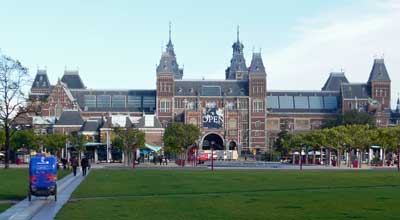
Brussels in particular is one I recommend a short stop in because the small historic center around what they called the Grand Place is amazing and gorgeous, while the rest of the city is rather boring by European standards. With a Eurail Pass you can jump off the train in Brussels and explore the city center for a few hours (luggage storage is cheap and easy) and maybe have lunch, and then hop on a later train to complete your journey to Amsterdam. There are opportunities like this on many if not most trips between larger cities, and if you buy the point-to-point tickets you have to stay on the train you booked.
Another example is the high-speed train between Barcelona and Madrid, which takes about 2.5 to 3 hours in each direction. There are some interesting cities in between, but in this case you could take a morning train from Barcelona to Madrid and then check into your accommodation, and then hop on another train from Madrid to Toledo, which takes about 30 minutes and costs €14 each way. Toledo is a historic and fascinating town, but it’s also pretty small and you can explore the main sights in an afternoon. With a Flexi Eurail Pass where you buy a certain number of travel days, you can save more money by adding on these sorts of nearby stops on travel days.
If you'll be touring major cities within ONE country, a single-country pass might be perfect, and Second Class passes are available for all ages
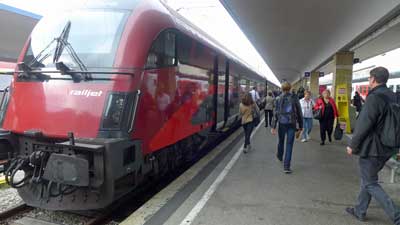
Single-country passes are still available and they MIGHT be good value for you, but it depends on which country and how much traveling you’ll be doing. If you plan on going all over a larger country such as Germany, France, or Spain, and especially if you like to make plans as you go, a Single-country pass for one of those might be your best deal. On the other hand, smaller countries (such as the Netherlands) or countries where train tickets are already fairly cheap (such as Italy) might be harder to get value out of. Long story short, for single-country passes you really need to check fares of the places you plan on going and see how they add up compared to the pass.
>>>Check prices for Single Country Passes
Eurostar (between London and Paris or Brussels or Amsterdam) tickets are now included for Eurail Pass holders for a €30 reservation fee
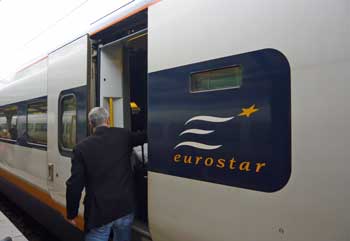
Our recent tests show that Eurostar fares one-way from London to Paris can be as low as €49 if you book about 3 months out, or as expensive as €214 for the same seat if you wait until the day of travel to buy. Round-trip/return tickets can be even cheaper if there is a promotion running.
>>>Check Eurostar prices
If you are on a really low budget, a Eurail Pass isn't a good idea
Here’s the thing. As we’ll discuss below, there are many potential benefits to Eurail Passes, and they will often save you money, but they do cost a lot and they only really save you money when traveling in the more expensive countries.
So let’s say you have a flight to Rome and then US$2,000 to last you a month after you arrive. Buying a Eurail Pass before you go would help you see a lot in that month, but you’d practically need to sleep in parks for your funds to last the whole time. You’d be better off moving slowly in the southern countries, or just in Italy itself, as a way to have the best holiday on your budget. You might also be tempted to use a Eurail Pass mostly on night trains so you can save the cost of a hotel or hostel, but those aren’t ideal for most of us.
The cheapest way to get around Europe by rail is to buy all train tickets online at least a couple months in advance. The fares are low, but they are non-refundable and non-changeable. See how far in advance you should buy train tickets to get those attractive fares.
If more than a little of your travel will be in eastern Europe, a Eurail Pass isn't a good idea
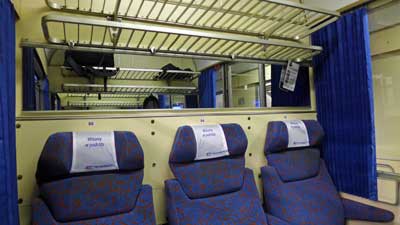
The good news is that the trains operating in this region, and the buses that operate alongside and/or where trains aren’t running, are quite cheap. So if any significant part of your trip will be into this region, a rail pass doesn’t make sense.
Basic types of Eurail Passes
Long gone are the days of the simple options, replaced by specialized passes that are meant to appeal to different styles. It should be pretty easy to figure out which is best for you, and then keep going down the page to decide if it’s worth it at all.
Eurail Global Pass – 4,5, or 7 days within 1 month or 10 days within 2 months
Until recently the minimum number of travel days with 10 days within 2 months, but now you can buy as few as 4 days within 1 month for about €200 to €250 (for first class). This can actually be an interesting strategy if you are planning many shorter and cheaper trips (like within Italy or Eastern Europe), and also 4 or 5 longer trips such as Berlin to Amsterdam. This way you can buy only 4 or 5 travel days and only use them for your most expensive travel days, and just pay as you go or buy cheap advance tickets for your other journeys.
Eurail Global Pass – 15 to 90 consecutive days
This variation allows for unlimited travel on the system for between 15 and 90 total days. They are really only a good idea for people who are certain they are going to travel very often, with much of it being in the north of Europe. The problem with them is that if you really try to get your money’s worth, you will probably ruin your trip by spending too much time on trains in general. On the other hand, if you will be in Europe for 2 or 3 months and plan on traveling around a lot, you can get a LOT of use out of a longer pass. The 3-month pass is around €900 so it’s literally about €10 per day. Imagine going back and forth between Berlin and Munich or Barcelona and Madrid for €10 per day!
One Country Pass
Obviously these are for travel within one country only. Again, they can be great deals if you plan on extensively moving around one particular country.
Where to buy your Eurail Pass
Eurail Passes are cheapest and easiest to buy online, primarily from two main sources which offer all the same products at the exact same prices:
This is a reliable company based in the Netherlands but with fulfillment offices in the US and Ireland. Price of Travel is a partner with this company, and if you use the links of this site we earn a small commission to help keep this site online. Eurail.com is usually cheaper than RailEurope (discussed below) by the way.
They were founded in the 1930s and are based in New York, but owned primarily by the French and Swiss rail companies. They offer free shipping (2 to 3 business days) on all orders of US$399 or more, although now that a mobile version is available, this is meaningless. Price of Travel is a partner with this company, and if you use the links of this site we earn a small commission to help keep this site online.
Reservations on European trains for rail pass holders
For most of the fastest trains between major cities you’ll need to reserve a seat even with a rail pass. It can usually be done just before you leave and the cost is usually around €5. Here’s a full list of which European trains require reservations and which don’t.
Reservations are required on all intercity (longer distance) trains in or involving France, Spain, Switzerland, and Italy. For most trains in Germany, Austria, Netherlands, Belgium, and most of eastern Europe, you can usually find trains that don’t require seat reservations. Often, if you don’t leave until after 9:30am or so, you can ride on any train with no seat reservation, but you have to research each leg to be sure.
How to determine which trains require seat reservations, and also get schedules
You can click on the link just above this section for a list of countries and their seat-reservation policies, but in some cases it’s actually a bit more complicated than that. For example, you can generally ride without a seat reservation on fast ICE (Inter City Express) trains in Germany if you depart after 09:30 in the morning. They do this to free up seats for business travelers who pay full fare, and they don’t mind filling up seats with rail pass holders on trains leaving a bit later.
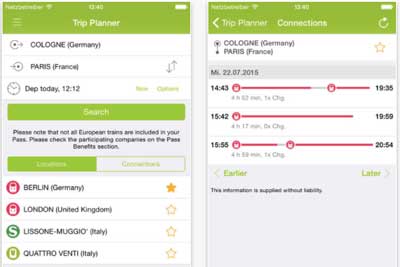
Night trains in Europe are making a comeback
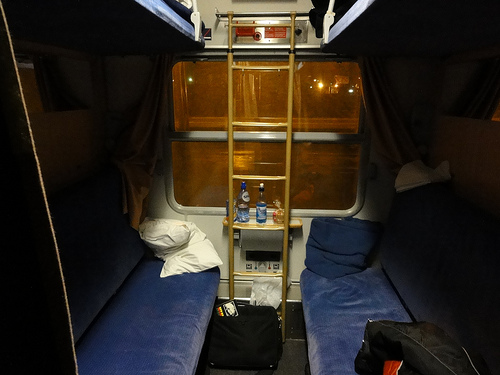
Fast forward to 2024 and night trains are not only expanding service, but they are very trendy. Some of it is nostalgia for the older way of getting around, but most of it is for environmental purposes combined with European hatred for the “low cost airline” experience with RyanAir and Easy Jet etc.
Personally I’m still not a fan of night trains because I find it difficult to sleep on them since they often get decoupled at interim stations in the middle of the night and then coupled onto other trains coming from other places, and I can’t sleep through any of that. But still, they are worth looking into and they are fun to try at least once.
A bit of warning that they tend not to be cheap and even if you have a Eurail Pass you’ll almost certainly want to book a sleeping cabin with a bunk or couchette, and that will come at an extra fee. On the other hand, if you are the sort of person who can sleep sitting upright in a normal seat, then that won’t cost any extra on most overnight trains.
Factors to consider when thinking about any Eurail Pass
Assuming you know which Eurail Saver Pass option is the best one for your type of trip by now, we’ll go over the main factors that should help you decide whether it’s the best idea for you.
Eurail Passes are best for standard ‘medium length’ journeys
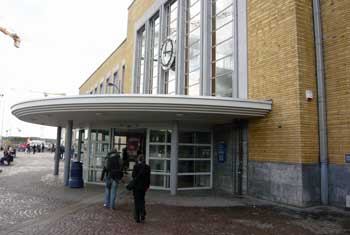
However, if you are determined to travel between Rome and Paris, it’s about a 14-hour journey that will almost certainly be overnight. In this case, a cheap plane ticket is probably better, although taking shorter hops on the train is even better, so spend a day or two in Milan or Lyon on the way instead.
And of course, if you prefer to stop in various small towns between the big ones, then a Eurail Pass won’t pay off, except for the traditional kind for unlimited travel in a given period.
Eurail Passes are better value in northern Europe, France, and Spain, and poor value in Italy
Once you do a bit of research you’ll quickly learn that train tickets (and almost everything else) are much more expensive in Germany, Netherlands, Denmark, Sweden, Norway, and Finland than they are in Greece, Italy, Portugal, and Spain. With this in mind, the regional passes can make sense if you are spending time in the south, but the Global Passes almost certainly won’t. Train tickets in Spain used to be fairly cheap, but in recent years they’ve added new high-speed trains between the major cities, and these are quite expensive.
Unlike most other countries, Italy really subsidizes its train tickets so they are quite reasonable even on travel day, and very cheap if you buy a month or more in advance. For example, you can go between Rome and Florence for around €49 if you buy on travel day, and as little as €19 if you buy well in advance. In most other countries, fares are double or triple that much for similar rides.
So consider your planned itinerary. If more than half of it is in the Mediterranean countries then look into a Regional Pass or just buy tickets as you go, because they tend to be pretty cheap. But if you are planning on spending at least half your time in Paris and places to the north of it, then a Eurail Pass is probably a money saver because those tickets are expensive.
Trains are almost always better than planes
Flying sucks, even in Europe
Until you’ve experienced the joy of traveling around Europe by train you might be tempted to “maximize” your time by flying low-cost airlines between each city. This would be a mistake. In order to get truly cheap airfares you have to purchase long in advance, buying non-refundable tickets. You might also have to commit to flights in the very early morning or in the late evening, because cheap tickets on convenient flights sell out quickly.
And again, most European airports are around an hour outside of the city. They are often on the main train lines, which helps, but still you have to deal with the madness of security and also try to get there at least two hours early. From one city center to any other city center it’s about 5 hours minimum, even if they are close, and those are pretty miserable hours.
Train travel is a positive experience

Not only are all the seats comfortable on trains, but you also have an interesting view most of the time. Better still, trains deposit you in the heart of every city, which is usually the neighborhood with the cheapest hotels and food. It’s a wonderful feeling to step off a relaxing train ride, buy a hot dog or sandwich at a local shop, and then be in your hotel room only about 10 minutes later.
Eurail Passes are better than train tickets alone
As someone who enjoys the process of crunching numbers and looking for value, I have to also mention that I’d buy a Eurail Pass even if it seemed like it would cost a bit more than the individual tickets. With a pass you get an extra element of freedom that is worth a lot more than you might expect until you’ve used one.
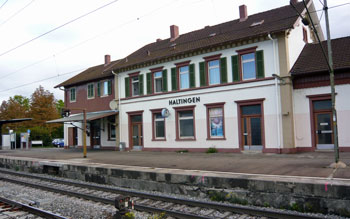
Let’s say you are heading from Amsterdam to Hamburg tomorrow morning. The 09:00 train you planned for might seem a bit ambitious after a long night out, so you can instead opt for the 10:00 or 11:00 train. As long as you walk into Centraal Station 10 or so minutes before departure, you are on. If you are flying you can’t change your ticket, and if you are buying train tickets as you go you have to be in line at the international desk at the train station at least 30 minutes early, and even then you might miss it if they are busy.
Freedom and getting to feel like a big shot
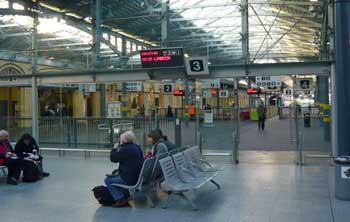
Let’s say you are staying at a hostel in Brussels, and two groups of new friends suggest that you go along with them to their next stops. One group is going to Bruges, which is a short and cheap journey, so you can join them by buying individual tickets (unless you have the unlimited pass, making it free). Then you restart your trip from Bruges, on to your next destination. The other group is headed to Berlin on a night train, which is long and expensive, but with a Eurail Pass you don’t even have to think about the cost. On you go, just like a rich person.
Buying a Eurail Pass is great for those who might run out of money
We all know people who keep meticulous track of every penny they spend, and who are always putting money away for a rainy day. And we all know people who can take a US$100 “entertainment fund” and burn through almost all of it in just a few hours. For the first type of person, a Eurail Pass can help you keep track of expenses, but it’s really the second type of person these are best for.
It’s sad to hear about people who have big plans to see their dream destinations, but they run out of money for transportation halfway into the trip, so they have to just stay put until they fly home. It happens. Locking in your major transportation costs before you leave home, and probably saving money in the process, is a wise move for anyone who isn’t as disciplined as they’d like with their money.
>>>Check prices on Eurail Passes
Bottom line: If you want to keep travel costs down, your choices will usually be a Eurail Pass or buying tickets at least a month or more early
In the last few years, almost every long-distance train ride in Europe has switched to a pricing system similar to low-cost airlines. In other words, tickets go on sale 2 to 6 months ahead of time at very low prices, and they keep getting more expensive as the train fills up and the date approaches. For most trips where a rail pass is possible, this is how things stack up:
Cheapest possible way: Buy advanced (non-refundable, non-changeable) train tickets at least 30 days in advance
Next cheapest way: Buy a Eurail Pass and make seat reservations as you go, usually only a day or less in advance.
Most expensive way: Buy train tickets as you go, or less than a week in advance.
Thinking about it this way should make the choice a bit easier. If you are the type who likes to plan each day and travel segment long before you even leave home, then buy tickets online for the best prices. This can be the best strategy for most shorter trips (10 days or less) because you simply don’t have enough time to change many things as you go anyway.
Buying a Eurail Pass won’t be quite as cheap, but you are buying a LOT of flexibility with the extra money. If you dream of making up your plans as you go, or even making up your plans just a few days in advance, this is almost always your best bet.
But if you wait too long, and just show up looking to buy train tickets as you go, they are going to cost a fortune. As recently as only a few years ago all seats would be the same price on many rail systems, so you could always just wing it. When each country computerized its rail systems so they can sell advanced tickets cheaper, they also had to keep track of seat reservations, so the whole pricing structure had changed to favor advanced ticket buyers and rail pass holders over those who’d prefer to just hop on any train as it is leaving the station.
Have a rail pass or itinerary question of your own?
It wasn’t planned but scores of people began asking me rail pass and itinerary questions at the bottom of this article and a few others. I’m happy to keep answering them and now I’m trying to organize them better as well so they are easier for other people to find.
If you have a question about specific types of European rail passes, please ask it in the comments below.
But if you have a question more about a European itinerary or other non-rail-pass questions, please click over to the European itineraries Q & A article and ask in the comments of that one.

Hi Roger,
I’m planning a trip through the Balkans with a friend, from late July to late August, before our exchange in Germany.
We were considering a eurail select pass (Germany, Austria, Slovenia, Croatia, Serbia and Montenegro) supplemented with buses of course.
We plan to travel by train from Germany through Austria and into Slovenia where we will stay for several days. Then train to through Zagreb – Belgrade and stay a week or so. Next the big ride from Belgrade to Bar and stay for a a few days. Here we will bus into Croatia (which we’ve learnt is doable) then travel the southern Adriatic coast for several days by bus. Then the train ride from Split through Zagreb – Ljubljana, were we will stay another couple days and then bus or train to Vienna and ‘home’ to Germany.
My questions are:
Do you think this is doable in the allotted time? I’ve allowed a week or so of excess obviously.
Do you think a rough budget of $1000 US would do (we plan to travel light and rough, except for boozing of course.)
And finally, do you think that a Eurail pass is the best option?
Or would simply buying bus and train tickets individually as we go be cheaper or easier?
I’ve looked at each leg on Eurail’s map and these routes run (except for Vienna – Ljubljana and Montenegro – Croatia unfortunately. But these can be travelled by bus I believe.
You run a great service here, thank you!
Also, thanks for your reply in advance!
Eden
Eden,
Yes, it sounds like you are allowing enough time for what you have in mind. The main problem that many people have is that they don’t realize that a transit day allows for little or no sightseeing, so they assume they can move cities every day or every other day and still appreciate what they’ve come to see. In your case it sounds like you have enough stationary days mixed in.
As for your budget, that is a rather cheap corner of Europe you’ll be exploring, at least once you leave Germany and Austria. I can’t exactly add up the total number of days you’ll be on this trip, so I’ll break it down by per-day, per-person budget estimates. Assuming you’ll be either sleeping in a hostel dorm or sharing a cheap double room, you should be able to average about US$15 per night per person (more like US$25 per night in Germany and Austria). That will usually include a simple breakfast as well. For lunch and dinner you should have no trouble getting something decent for around US$5 per person per meal, assuming that thrift is a high priority. Hopefully you’ll have enough money to splurge a bit on some sit-down meals here and there, as the US$5 average would be for pizza or Mediterranean take-away and that sort of thing. Beers in bars, by the way, can be found for around US$2 each if you look around.
Most of the attractions in that region are free or quite cheap, so it’s easy to see the sights for next to nothing. The bus rides will average US$10 to US$20, depending on distance. So if all of that adds up to US$1,000 or less, then you should be fine.
Since it sounds like you are on a tight budget, I would NOT get a Eurail Pass for this trip. Not only is the train service pretty poor in former Yugoslavia, but it’s also quite cheap even if you buy without much notice. Cutting to the chase, buy your train tickets in Germany and Austria online as far in advance as you can for the lowest prices. Then once you get to Slovenia you’ll want to compare bus service to train service for the rest of your stops (as you’ve mentioned). You’ll typically find that the buses take about the same amount of time (because trains are slow), and they are usually much cheaper. Not only that, but you’ll find that there might be 10 buses per day going between two of your cities, and only 2 trains per day. And weirdly enough, you can often get free wi-fi on buses, but almost never on trains.
The buses also usually have the same price no matter when you buy a ticket, although in Croatia (and possibly other areas) they are cheap if you buy early and still pretty reasonable if you buy shortly before departure. You can buy many of those bus tickets online, and then show the confirmation number to the ticket person as you board. In other cases it will only be printed tickets sold at bus stations, but in those cases it’s usually easy to buy a ticket on travel day or the day before.
I’ve spent a lot of time in most of the areas that you’ll be covering, and some things in that area are more mysterious than the well-covered countries like Italy and France, so feel free to follow up with other questions if you have them. Have a great trip. -Roger
Hi Roger,
Thank you for your quick reply! Unbelievable. You’ve answered many of my questions. However I just want to ask quickly:
By the bus rides being $10-20, do you mean for short distances? Or say between the capitals?
Also just preemptive online searches have brought up not much in the way of anything haha, prices or otherwise. I’m just worried that I’ll get there and be paying $50 dollars per large bus or train trip (between Zagreb and Belgrade for instance) and blow $500 on transport?
But considering the amount of places we plan on travelling to, we may end up spending more on the eurail pass than with buying individual bus and train tickets?
Sorry if I seem to be asking the same question again!
Thanks,
Eden
Eden,
The US$10 to US$20 estimate for bus rides was based on the legs you had mentioned. For example, I’ve just looked up Zagreb to Split, which takes about 5.5 hours on the bus, and it will cost around US$13. Typically buses in that region will cost around US$2 to US$3 per hour traveled, which is obviously very cheap by international standards. And most of them are surprisingly comfortable as well.
Belgrade to Zagreb is also about 5.5 hours by bus, and costs about US$30, but that will probably be one of your more expensive journeys. The train takes a bit over 6 hours, and it might actually be cheaper. There are also sometimes promotional fares on trains between certain cities, so it’s worth researching the options before you book.
As for a rail pass, it really depends on how many longer journeys you’d be taking in Germany and Austria, which I’m guessing will be a low number. Once you get into Slovenia the bus or train rides will likely be no more than around US$30 each, and many should be under US$20. If you do the math yourself it will probably show that a rail pass would not save you any money.
One more time though, the trains in Germany and Austria are quite cheap if you book at least a few weeks in advance, but quite expensive if you book on travel day. If you buy a rail pass you can just go as you please (although you’ll need easy-to-get seat reservations in some cases), but a rail pass is also likely to cost you much more in the long run. Feel free to follow up again if you have more specific questions. -Roger
Hi Again Roger,
Thank you so much for the info given in your last reply. Really helpful!
We’ve now booked the flights and decided not to get a eurail pass! However a new and more specific question has arisen.
We are flying into Frankfurt on the 14th or July and then taking a bus up to a festival in Ferropolis about 20km north of Leipzig. Then on the 19th we are travelling down into the Balkans. Now that we are free of only visiting eurail countries I guessed that it would be cheaper to bus or train down through Prague-Bratislava-Budapest into Belgrade and beyond.
Would I be assuming correctly? Or do you think it may be easier to bus through Germany.
Also that trip may take up a lot more of our time. Would we be hitting too many destinations in that short period. We would be staying a couple days in Prague (we will hit it again), Possibly a week in Budapest. Then onto Serbia-Montenegro-Croatia and Slovenia until the 25th or Aug or so.
Thanks,
Eden
Eden,
It’s hard for me to say, but my guess is that it would be cheaper to take trains or buses through Prague, Bratislava, and Budapest and into Serbia. The trains are reasonably fast on that route until you get to Belgrade, and from there you’ll be better of on buses.
On the other hand, I’m not sure what your plan for a bus through Germany would be. Generally it’s better to take trains in Germany because they go everywhere and are much faster than buses. And if you buy the train tickets in advance, they can be fairly inexpensive as well. I’d have to know the specifics of each option to be able to confidently give you advice. But I don’t think 2 nights in Prague is rushing too much, especially if you’ll get back there again later. Sorry I can’t be more definitive with this. If you have a more specific question I’ll be happy to try to answer it. -Roger
Hi Roger,
Thanks for that reply, we have decided to go from (15th of July) Frankfurt – Budapest – Belgrade and wing it from there, buying tickets at stations along the way. Then we are returning to go to a festival on the 12th in Budapest. We are looking at buying a ticket for a bus or train from Frankfurt to Budapest now. This is the cheapest and best option I could find so far. Any thoughts on this as an option? I realise it’s a very long overnight bus ride, but surely Eurolines will provide a good service and a sleeping tablet will enable some rest to be had haha.
https://www.eurolines.de/index.php?origin=Frankfurt&origin_p=&L=1&id=57&destination=Budapest&destination_p=Budapest&departure_date=16-07-2015&return_date=&no_passengers=1
Seat 61 seems to think that a train from from Budapest to Belgrade is 15 euro and can be bought at the station. We will then (as I said) bus and train around through Montenegro Croatia Slovenia etc until we catch a train or bus up to Budapest to go to this festival on the 12th. Those tickets will be bought on the run. Sound like a sound plan to you?
Thanks a bunch Roger,
Eden
Eden,
I’ve only ever taken daytime buses with Eurolines and I haven’t seen any sleeping facilities on the buses, but they are professional and reliable so I’d imagine that it will also be fairly comfortable.
I think the rest of your plan sounds good. The buses can be a bit confusing at first, and in some cases the ticket agents will speak little or no English, but there should be people there to help and it always works out. Have a great trip. -Roger
Hi Roger.
Me and a group of 3 friends are planning to travel from Valencia, to Madrid, to Barcelona. Then to Paris, Milan, Rome, Athens (and take a cheap flight to Athens), back to Rome. Then to Vienna, Zurich, Munich, Prague, Berlin, Copenhagen, Amsterdam, Brussels and back to Valencia. All within one month, we are under 25 and wish to save money and be as effective as possible. Would a global Eurail pass be a good idea? How about a 10-day and buy separate tickets for some instances?
Thank you. – Jaime.
Jaime,
First off, that is too ambitious of an itinerary for 30 days. By my count it looks like about 16 stops, which would literally mean spending every other day of the month on the road. I’ve written a lot about this before in this comments section so I’ll give you the quick version here. Only a few of your journeys are in the 3-hour range and most are more like 5 hours or more apart. In those cases you barely have any sightseeing time at all on your travel days because it will take 7 or 8 hours in the middle of each day from the time you’ve checked out of one hotel or hostel until you are checked into the next one. I’m actually a fan of “fast travel” but with this schedule you’d feel like you were on a cruel game show rather than on a holiday.
For me the sweet spot even in fast travel is 3 nights per city, or 2 nights in small towns. So I think you could do maybe 10 to 12 total cities in one month, or you could add 10 to 15 days to see all of them on your list. Assuming you choose one of those options then I do think a Global Eurail Pass would be ideal because you have quite a few longer and more expensive legs on this trip. The main options (as stated in the article on top of this page) are to buy all of your train tickets at least a month or two in advance, or to buy a Eurail Pass so you can move around as you please. The advanced tickets are usually cheaper, but of course it means locking in your whole trip ahead of time, which is much less enjoyable on a big trip like this.
Depending on how many cities you end up with and in how much time, I think the 10 days in 2 months option might be best because it allows even more flexibility so you could take a bus or flight or stop in between cities without worrying about getting “full” value out of your rail pass. If you do decide to do 15 or more journeys within one month then the 30-day Continuous Pass might be best because it obviously allows you to travel every day if you like. If you trim your city list down or expand the duration of your trip, I’ll be happy to help with a more specific opinion. Best of luck. -Roger
Hi Roger, Shelby and I arrive in Paris (CDG) at 5 pm June 17th. We already have global passes but cannot seem to purchase a reservation for any train going to Berlin that evening. Do we just wait until we arrive and purchase at the train station? The German rail website seemed the most staight forward as it listed a reservation only selection, however it then said trips crossing a country border (in this case France to Germany) requires a ticket purchase in order to get a reservation. Since we already have purchased global passes, why would we need to purchase additional tickets? Surprising how complicated travel reservations/tickets are. Thanks – philip
Philip,
Yes, I see what you mean. This is a tricky one for a couple reasons, including the fact that there really isn’t a night train from Paris to Berlin, so you have to change in Mannheim to actually get on the “night train” to Berlin. It looks like your best bet would be to book a seat reservation on the TGV from Paris to Mannheim at 19:06, which is US$16 per seat on raileurope.com. Then make a separate reservation on the Mannheim to Berlin train leaving just before midnight. On RailEurope.com the cost is US$20 for a reclining seat or US$34 for a bunk (couchette) in a 6-bunk compartment or US$65 for a bed in a 3-person compartment. If that is where you bought your Global Passes, it should be pretty simple if you divide it into 2 legs like that. If you bought your passes through another company, hopefully you can make the same reservations through them for a similar fare.
If your plane is scheduled to land at 5pm (17:00) then you might have to hustle through Customs and Immigration to make it into the Paris Est train station to make a 19:06 train, but under normal circumstances you should be able to make it with 30 to 40 minutes to spare. The fastest way (that time of day) would be to take the RER commuter train from CDG Airport to Paris Gare du Nord (30 minutes), and then walk out of the station and a few blocks to the Paris Gare de l’Est station (10 minutes walk). If you have a seat reservation for that train to Mannheim you can literally just walk into the Est station and then onto the train without stopping, so it might be stressful but it would be quick and pretty easy. In other words, as long as you were on a RER train from CDG to Paris Gare du Nord by 18:10 or so, you should make your Mannheim train pretty easily.
However, if you get unlucky and don’t make the 19:06 train, it appears that your other options would be to take a train to Brussels or Amsterdam and then a morning train to Berlin (after a night in a hotel or in the train station). If that’s the case you’d probably be better off just sleeping in Paris and then taking the earliest train toward Berlin the following morning.
The good news is that once you get to Berlin, you won’t need many seat reservations and those you do need should be pretty cheap and easy to get. It’s just a complicated route for your arrival day, with France making things a bit more challenging than other countries. Hopefully this helps, and feel free to comment again if you have other questions. -Roger
Thanks Roger, that was very helpful!
Hi Roger,
My husband and I (in our 30’s) will be in Europe in August/September. We are trying to work out our best option for the following:
31st Aug Amsterdam – Paris
19th Sept Prague – Vienna
22nd Sept Vienna – Munich.
I’m thinking it would be best to buy tickets online in the next month or so rather than buy a pass. So you think this would be the best?
I’ve been looking on the OBB travel page and Thalys, is this correct? Many thanks
Charlotte,
Yes, if you are only taking 3 rides then there is no rail pass that would be helpful anyway. And if you are sure of the travel dates you want, then buying those tickets shortly after they go on sale (3 to 4 months out, usually) then they will be surprisingly cheap. Here’s an article that discusses when to buy train tickets in Europe with links to the official sites. Particularly the Amsterdam to Paris one would be very expensive if you bought close to the travel day, but quite cheap if you buy soon. Best of luck with this. -Roger
Hi Roger,
I’m Philip’s daughter, and I wanted to ask you for your help again. I am confused with how to reserve tickets for our trip. Do you think you could walk me through the process of using the direct train stations websites in bookings seats? I was looking for reservations but the times are much different than what are offered on the Eurorail website. We have our chosen cities and dates tentatively mapped out. Any help is greatly appreciated!
Shelby,
Sorry for the delay, and I’ll be happy to help, but I’m not quite sure what you are asking. For one thing, you probably don’t need many seat reservations unless you are traveling in or through France, Italy, or Spain. In those cases you should be able to go to the national rail website, all of which are linked near the bottom of this article about buying European train tickets in advance. Once there you’ll see the schedules for the individual trains, and there should be an option to buy a seat reservation rather than a ticket. You can even get them as an image to scan on a smart phone, as the conductors all have this capability.
I’m not sure which Eurail website you are referring to. Eurail.com only sells passes and doesn’t have schedules (at least that I’m aware of). RailEurope.com sells passes and individual tickets, but unfortunately they charge quite a premium for the individual tickets so I only recommend them for passes. They also only show the most popular train departures because the full schedule looks very confusing to most foreign visitors. The best site to see train times for most of Europe is bahn.com, which is the German site.
But again, I want to make sure you are going about this the best and least expensive way, and there are a few possible pitfalls in this system. So please let me know the specific thing or things that don’t look right to you, and I’ll walk you through them. Personally, I only get seat reservations when I need them, and outside of France I get them the day before travel because they are easy to get and cheapest at the train stations. -Roger
Hi Roger,
I am wondering if you could help me too 🙂 I am inviting my parents during summer, I stay in Czech Republic now. I am interested in the 2 country Eurorail pass for Germany and Switzerland(probably 4-5days). My parents are 60+ and I imagine train travel will be comfortable for them, and not to forget the the scenic beauty of black forest and Alps. So a 5 day pass for 3 adults would cost me € 771(2nd class, 15% discount). I am not too much interested to go around, may be to stop by at 2-3 main destinations in Germany and Switzerland. Do you think the pass will be a good option for us? I have come across many posts mentioning about the hidden costs of reservation etc. It will be great if you would help out. Thanks and have a nice day !
Pounami,
That sounds like a pretty good price for 3 people, as it only averages about €50 per travel day per person. However, it really depends on how far you want to travel within those two countries to know if it is good value or not. Switzerland, as you know, is quite a small country, and a train ride between any two cities there will usually be €40 or less, even if you buy on travel day. In Germany, however, if you go from, say, Berlin to Munich, it could cost €60 if you buy well in advance, or over €100 if you buy on travel day.
It will be much easier to help you determine the best way to do this if you provide a possible itinerary you might do. You mention the Alps and Black Forest, and if those are the areas you’ll focus on then the individual train tickets will be fairly cheap, especially if you buy in advance. It would mean going between Munich and Freiburg in Germany, and between Zurich and Interlaken in Switzerland. Those are fairly short distances so the tickets aren’t too expensive.
The best thing about a rail pass is that it allows you to make up your itinerary as you go, without having to worry about the very expensive list-minute ticket prices. But again, you have to be going more than 3 hours a day on the train or it doesn’t really save you money.
Also, the “hidden costs” of rail passes are mostly the seat reservation fees within France, which can be over €30 per person on the popular high-speed trains. In Italy the seat reservations are around €10 per person, but in Germany and Switzerland the fee is around €5 per person. Better still, you really don’t need seat reservations on trains in Germany or Switzerland as long as you don’t take the early-morning trains that business travelers take. In other words, if you don’t get on trains until around 9:30am, you can almost always just hop on board and find empty seats with no fee.
If you make a list of the cities you plan on visiting, I can help you decide if a rail pass is good value for you. -Roger
Hi, Sorry for the late response and thank you very much for responding. I really don’t have any itinerary as such. But it would be somewhat like to start at Dresden/Munich(closest to Brno, CZ). It could be Dresden to Munich also with a stopover for a night. Then to Frieburg, stopover for a day visiting black forest, then to Zurich(1 night stay), visit Interlaken and Mount Titilis, back to Zurich. From Zurich journey towards CZ through Munich 🙂
There is also a 4 day pass which costs 684 eur(3 persons) for 4 days, I can also choose this one !
Also, do you think it is manageable to stay Zurich for one night and see around the city and also make trip to Interlaken?
Thanks a lot !
Pounami,
As long as you are staying in central Zurich (near the river and the train station), you can see the main sights in only a few hours. The central area is quite compact and everything is close to the river and the lake. The train ride to Interlaken is short as well, so you can do a lot in a day in Switzerland, and the trains are pretty much always on time. Have a great trip. -Roger
Roger,
Thanks again. Yes, that’s what I am thinking too for Praque, Budapest,Cesky Krunlov and Krakow. I have already booked budget flights for all the other places, leaving a gap of 40 over days to fill in these places with Switzerland and a small part of Italy.
The European East part is actually good value for 4 countries including Austria(10 days USD336), but RailEurope offers it and not Eurail website. If I select the same 4 countries under “select” pass in Eurail side, the price is 600 Euros, strange ?
I thought train fares in Austria and Switzerland are expensive although their distances are short. Another alternative is getting Switzerland + Austria 2 countries Pass 10 days for 521 Euros and do side trips to the other places by bus.
Thanks alot.
Lee,
That’s strange that RailEurope offers that pass and Eurail.com doesn’t, but they are both big and legit companies so there’s nothing to fear by buying from one or the other.
One reason why (to me) Swiss rail fares are cheap is that most tourists are only going to go between, say, Zurich and Interlaken (US$26 to US$35) or Zurich and Lucerne (US$13). Even Zurich to Geneva is only about US$45, and you don’t have to buy in advance to get the low fare. For rail passes, especially Global rail passes, a person is generally going to have to spend US$50 to US$100 per “travel day”, which is usually just one ride per day. So to me, if the walk-up fare is cheaper than most of the per-day prices on rail passes, the fares are cheap. In Austria (and pretty much everywhere else in Europe) the walk-up fares are high on journeys of 2 hours or more, but you can still usually get a better fare if you buy a couple days out and avoid the most crowded departure times. In Czech Republic, Hungary, and Poland, the fares tend to be quite reasonable in general, although the service is usually slow.
For me, if the numbers feel like a close call, I prefer to get the rail pass because it will allow you to go almost anywhere with little notice. When exploring an area like Europe, that extra feeling of freedom is worth a lot, even if I end up staying pretty close to my original plan. Best of luck with your decision and trip. -Roger
Dear Roger,
I happen to find a European East Pass for trains that covers Austria, Cesk Republic, Hungary and Slovakia but one website mentioned it includes Poland and another one don’t mention Poland. Do you happen to know if this Pass exists ? Because I cannot find it in the Eurail Pass official website.
This Pass is may be my cheapest way to connect those places I wish to visit before finishing in Switzerland and Italy.. Another alternative is I get a 4 countries Eurail Select Pass that covers Switzerland , Austria, Hungary and Ceszk Republic; but I wonder if a 10 days travel Pass enough for me to reach all those places that I wish to visit ?
Can you please help me to see if 10 days is enough to reach my Switzerland itinerary in the other thread, plus 3 – 4 trips in Austria, one to Budapest and 2 to Cesky Krunlov and Prague ? It looks possible if I take overnight trains and do another short trip the next da.
Lee,
Until 2015, Poland didn’t participate in Eurail Global Passes, but now it does. However it appears that they now don’t allow Select Passes or regional passes, which is odd. The good news though is that buses in Poland are usually a better option anyway. The trains there are pretty slow, so the buses are often as fast or faster, plus they leave more often and have free wi-fi on board.
In fact, in the countries on the list above, a rail pass probably doesn’t provide good value. In Switzerland the train tickets are reasonably priced, partly because the cities are close together and also they have fixed prices so they don’t go up as the date draws near. In Austria the train tickets can be expensive if you buy on travel day, but again, the cities aren’t too far apart and a 3-hour train ride might only be €60 if you buy just before it leaves, and more like €40 if you buy a few days early. In Czech Republic and Hungary, the trains are fairly cheap, and they are slow and old. If this is the main part of your trip, I’d just wing it and buy as you go and mix in some bus trips.
Eurail Passes are great for trips like Berlin to Amsterdam or Milan to Munich. But for short rides in eastern countries, a rail pass doesn’t save you money, although it does give you more flexibility. Sorry if I’m taking you off track with this. I’m just trying to give you the best advice based on the question asked. -Roger
Hi Roger,
Thanks again. If there is any info that you need me to find out before your trip, please e-mail me with a title “From Price Of Travel”so I know it’s you.
I have nearly half my itinerary plan fixed up, leaving me with 42 days in between; which I will decide where to go depending on the transport in the cheapest manner. These 42 days in my original plan is meant for:
Switzerland: 10 – 15 day flexible depend on which transport way(please refer to my questions in the other post)
Italy :Cinque Terre 1-2 , Milan 2, Florence 3, Siena 1/2, Bologna 1/2, Verona 2(for Opera) – around 10 days
Austria: 6 – 9 days again depend on which transport Pass, Vienna, Salzburg, Innsbruck, Hallstat, Semmering Pass journey to be included.
The other 4 places will be Prague 3, Budapest 3, Krakow 2, Cesky Krumlov 1 – 2 but big headache how to join them.
Can you please help with some advice as to which is the best way to travel taking into consideration the transport cost and weather. I can forego the hotter Southern Places, only Milan must be in. I can also forego some of the “4 places” if I cannot get cheap connections and replace it with part of France from Lyon to Charmonix and Nice to join Cinque Terre. My only condition in joining these 43 nights are it must start from Salzburg and ends at Bergamo(Milan). Can you take up this challenge ? I am in the brink of giving up 🙂
Thank you again.
Lee,
Thanks for the offer. My next Asia trip will probably be to Korea, Taiwan, and then to Bali, which I know pretty well.
I think your plan looks pretty sensible. You’ll want to take trains for almost all of this. Trains in Europe go pretty much everywhere that you want to go. There are a few cases like Prague to Cesky Krumlov where the bus is actually a bit faster, cheaper, and it takes you to the city center of Cesky Krumlov instead of the train station on the edge of town. In Czech Republic and Poland (just to name 2 countries of many) the bus service is often better than the train service, and usually the main bus station is very close to the main train station.
If you are having trouble with a couple of specific legs, I’ll be happy to help you sort it out. Generally, there are trains leaving every hour or two between almost every major city within any region. I’m not sure which ones are challenging for you. -Roger
I read on other websites that because eurail is 1st class for 26+ age, plus reservation fees, so buying at the train station is cheaper than eurail, is that true?
I plan to travel Portugal, Spain, France, Italy, Greece, Poland, Germany, Denmark. Is it better to buy the global pass or the four country region pass? Thank you.
Jen,
The whole article above is all about helping you figure out whether a Eurail Pass is good value for you because the answer is complicated. Generally speaking, buying train tickets at the station just before you want to go will be very expensive.
In Italy, Poland, and Greece (which has very little train service) the individual tickets are fairly cheap so a rail pass may not pay off. The same is true for trips within Portugal.
In Spain, France, Germany, and Denmark, the individual train tickets are very expensive if you buy just before you go, so a rail pass can be a big money saver if you want to be flexible with your plans. But if you know exactly where and when you want to go, buying those tickets online at least two months or so in advance will be cheaper than using a rail pass.
With this in mind, the 4-country Select Pass for Denmark, Germany, France, and Spain could be good value for you. You actually wouldn’t need seat reservations in Germany and probably in Denmark. In Spain you’ll need seat reservations on the popular high-speed routes, and the same is true in France except the seat reservations can be €30 or more on some routes. So it’s all very tricky.
The bottom line for most people on a trip like this is that buying individual train tickets as you can will be very expensive on most of your trip, so buying a rail pass will allow you to keep prices reasonable and still able to hop on trains as you please. But the cheapest way of doing it is buying tickets online way in advance, which locks you in for your whole trip.
I’ll be happy to give you more specific advice if you lay out a more specific itinerary plan. Best of luck. -Roger
Hi Roger,
Thank you for your detailed response! My plan is to start from Portugal, stop at just the bigger cities in each country, plan to visit Lisbon, Barcelona, somewhere southern France, Venice, Florence, Naples, Athens, some islands in Greece, fly to Poland, Krakow, then Berlin, Hamburg, Copenhagen.
I plan to stay in each place at least 3-4 days, and the whole trip will take around 2 months. I’m wondering if a global pass will make sense, since I probably won’t travel up to 15 days.
Jen,
You can get a Global Flexipass with as few as 10 travel days in 2 months, and that might be the best choice for you. It sounds like you have at least 7 or 8 of the more expensive trips on your schedule, especially if you are mainly going between the big cities. Buying a Global Flexipass will mean that you can make up your plans as you go, and if the train ticket you want seems expensive you can use a travel day on the pass. If you don’t get any pass then you’d discover that Hamburg to Copenhagen might be €150 each way if you book it only a couple days out, and maybe more expensive if you book on travel day.
By the way, Nice is the best stop in southern France, as it’s a really nice beach town and it’s a very short train trip to Cannes and Monaco, which are also both interesting. Let me know if you have any more specific questions about this. -Roger
Hi, thank you very much for your reply and suggestions. (And sorry for my late reply)I have never traveled by train long term before. And never been to these countries in Europe. I am also quite worried my body will not handle it, since my longest travel before was 2-3 weeks, and I felt exhausted after returning.